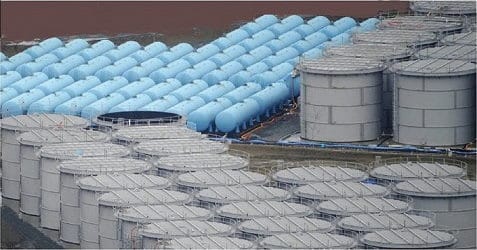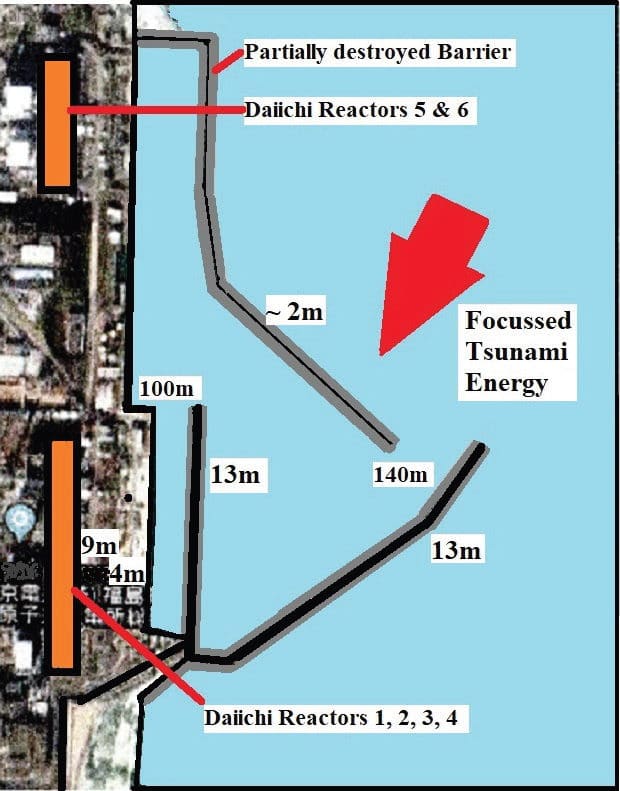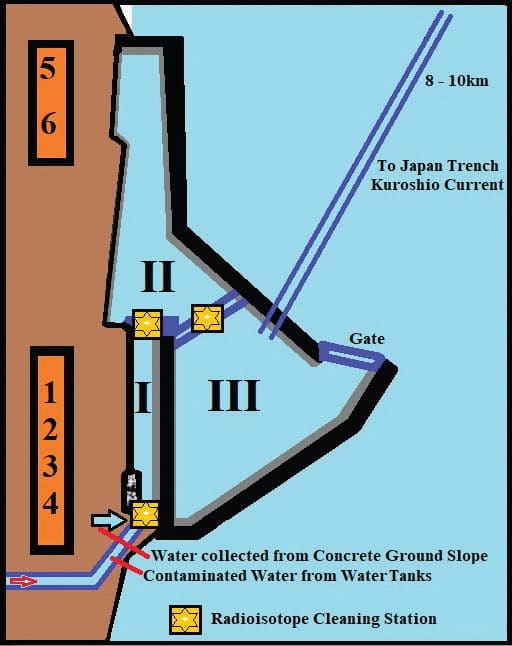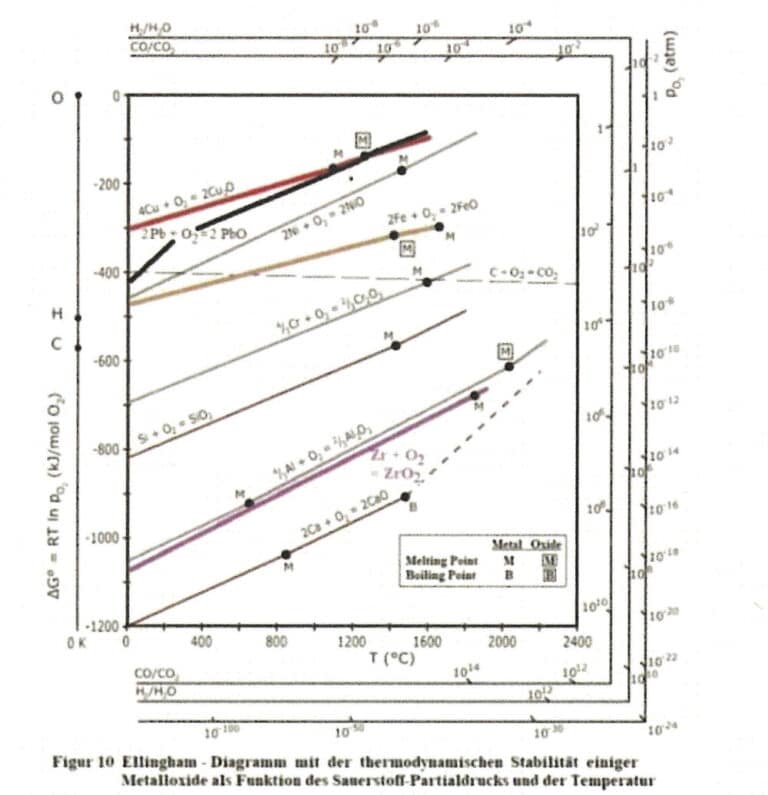Reduce Fukushima Damages
The Fukushima accident was caused by a sequence of several events: The exceptionally strong earthquake on March 11, 2011 caused the stop of all nuclear reactors of Japan and the Tsunami development in the sea northeast of Sendai. This Tsunami caused the flooding of Fukushima and destroyed the emergency system with pumps to cool the reactor rods, not the reactors. Due to the overheated reactor rods in zirconium alloy shells these reacted with water and formed zirconium oxide and hydrogen. This gas exploded and caused the destruction of the internal reactor structure and the release of radioactive clouds. There was no alarm system to prevent the hydrogen explosions by its dilution and removal. Then huge amounts of water were applied to cool the interior of the reactor and thus were contaminated with radioactive isotopes and radioactive tritium. The photo shows some of the large containers with water were the radioactive isotopes could be removed, but not the tritium which has a short half-life of 10.4 years. The ocean contains natural tritium formed from cosmic radiation so that the tritium-containing water could be sent to the Kuroshio current of Pacific Ocean without problem: it could not be detected far out in the sea. From “Experiences from the Fukushima Disaster” book chapter of Hans J. Scheel published October 2018 by IntechOpen, London.






